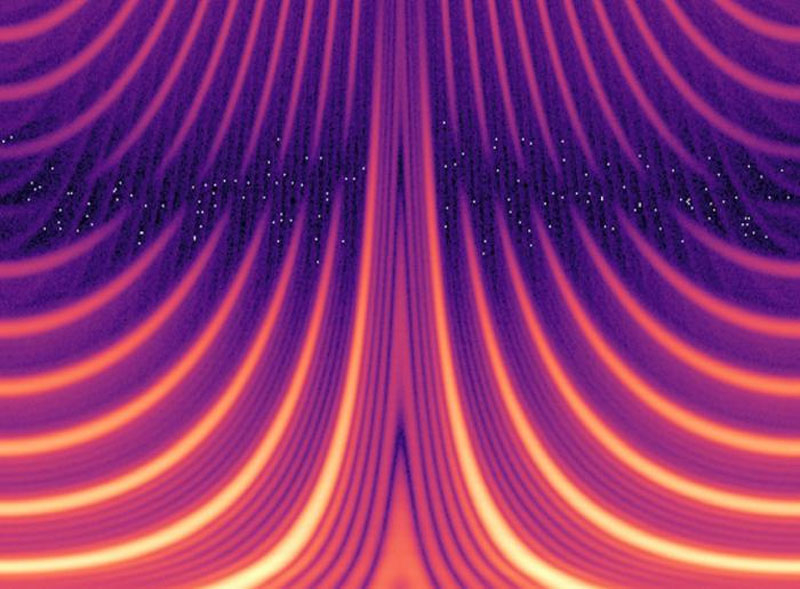An international team of scientists has announced the creation of the foundations for the world’s first quantum memory operating in the X-ray range. In the future, this will make it possible to develop more dense and noise-resistant memory for quantum computers, which today are limited in time for carrying out quantum operations. The transition to “X-ray” memory will increase the storage time of quantum states, which will bring the practical value of quantum computing closer.

Illustration of a nuclear frequency comb displaying single photons visualized on a logarithmic scale. Image source: DESY/Sven Velten
Modern models of quantum memory, when talking about photons, assume the interaction of light and atoms. Some time ago, a group of Texas A&M University professor Olga Kocharovskaya proposed switching to a new method of storing and releasing X-ray pulses at the level of a single photon, when the photon acts not on an atom, but directly on its nucleus.
In a new study, a team of scientists from Texas A&M University and their colleagues from Germany and France took advantage of the theoretical developments of Kocharovskaya’s group and conducted an experiment that proved the feasibility of the idea, which they reported in an article in the journal Science Advances.
Holding light (photon) motionless—producing a kind of recording of information—is a difficult task. This can be done using quasi-stationary states such as a spin or polarization wave.
«Quantum memory is an indispensable element of a quantum network, providing storage and retrieval of quantum information,” Kocharovskaya explained. “Photons are fast and reliable carriers of quantum information, but they are difficult to hold still in case this information is needed later. A convenient way to achieve this is to imprint this information in a quasi-stationary medium in the form of a polarization or spin wave with a long coherence time and release it back by re-emitting the original photons.”
The idea was tested using PETRA III synchrotron sources at the German Electron Synchrotron (DESY) in Hamburg and the European Synchrotron Radiation Facility in France, leading to the first implementation of quantum memory in the hard X-ray range.
The experiment was based on creating a frequency comb in the absorption spectrum. X-ray pulses with an absorption spectrum corresponding to this comb were, as it were, remembered by nuclear targets and could be re-emitted with a certain delay – as if read. The transfer of this mechanism, as mentioned above, occurred in the X-ray range to influence the nuclei of atoms. Smaller nuclei are less sensitive to the effects of external magnetic fields and other disturbances, and quantum states, as we know, are afraid of all this and are destroyed.
The next steps planned by the team include emitting stored wave packets of photons on demand, which could lead to the implementation of entanglement between different hard X-ray photons – the main resource for quantum information processing. The team’s research also highlights the potential for extending optical quantum technologies to shorter wavelengths, which are inherently less noisy because interference tends to spread through high-frequency waves.